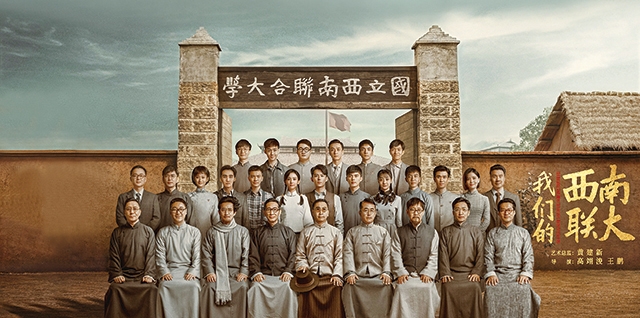University’s enduring impact
西南聯大:戰火中的青春
Few universities in the world are so intimately tied to a nation’s founding and development as is the National Southwestern Associated University, known as Xinan Lianda in Chinese. Though it was only open for several years, its history and graduates have played a key role in modern China.
世界上幾乎沒有大學能像國立西南聯合大學(簡稱“西南聯大”)那樣,與一國之建立發展有著如此密切的聯系。盡管西南聯大僅存在了短短數年,但其校史與畢業生在現代中國中發揮了關鍵作用。
On May 29, a documentary called One Day When We Were Young invited 16 alumni – all famous scholars – to share their stories about the university. A TV series to be released, The National Southwest Associated University And Us will tell stories of students in the university who study hard to serve our motherland.
5月29日,一部名為《九零后》的紀錄片邀請了16名如今已是知名學者的西南聯大校友,來分享自己與母校的故事。而即將播出的電視劇《我們的西南聯大》將講述該校學生刻苦學習,報效祖國的故事。
The National Southwestern Associated University was born during wartime. In 1937, Japan invaded northern China. To escape Japanese blockades and aerial bombardments, the remaining students and faculty at Peking University, Tsinghua University and Nankai University retreated to Changsha, Hunan province, and later headed south to Kunming, Yunnan province. As they worked together, the three universities merged into National Southwestern Associated University.
西南聯大誕生于戰爭年代。1937年,日本入侵中國北方。為逃避日本封鎖與空襲,北京大學、清華大學及南開大學余下的師生撤往湖南長沙,后來南遷前往云南昆明。在這群人的共同努力下,三校合并為西南聯大。

Studying there was never easy. Students were short of food, books and clothing. Forty students had to live in a big thatched room. Bugs were everywhere. Sometimes they were subjected to sporadic bombing by the Japanese.
在西南聯大的學習生涯十分艱苦。學生們缺衣少食,也沒有足夠的書本。一間茅草屋頂的大宿舍要住40名學生。到處都有蚊蟲。有時還要遭受日本侵略者的轟炸。
Even so, the university still served “as a beacon of hope during the bleakest hours of the Japanese invasion” for students, noted the Global Times. Here they could continue their study and animatedly debate the future of China with teachers.
《環球時報》報道說,盡管如此,這所高校依然是學生們心中“在日本侵略最黑暗時期中的希望燈塔”。在這里,他們可以繼續學業并與老師們熱烈地討論中國的未來。
According to the Global Times, Xinan Lianda had five colleges and 26 departments, with 179 elite professors. They included famous figures like linguist Chen Yinke, historian Qian Mu, architect Liang Sicheng and philosopher Feng Youlan. Three principals of the university, Jiang Menglin, Mei Yiqi and Zhang Boling, received both Chinese and Western education. Students here could have a higher education based in large part on the American model. It sought to provide general education and academic freedom.
據《環球時報》報道,西南聯大共有共設5個學院、26個系、179名大師級教授。當中包括了如語言學家陳寅恪、歷史學家錢穆、建筑家梁思成、哲學家馮友蘭等名家。該校的三位校長 ——蔣夢麟、梅貽琦、張伯苓都接受過中西方教育。在這里,學生們可以接受主要基于美國教育模式的高等教育。該校力圖提供通識教育與學術自由。
Though Xinan Lianda was disbanded and each school moved back to its original home in 1946, the experience of studying there had an everlasting impact on students.
盡管西南聯大于1946年解散,各校返回原址,但西南聯大的求學歲月對學生們產生了永久的影響。
Two of its students, Yang Zhenning and Li Zhengdao, shared the Nobel Prize in physics in 1957. Yang has said many times in the past that his experience in Kunming profoundly influenced his career and that he would not have been as successful without it.
該校的兩名學生 —— 楊振寧與李政道于1957年獲得諾貝爾物理學獎。楊振寧此前曾多次提及,他在昆明的經歷深刻地影響著他的職業生涯,沒有這段經歷他也無法取得成功。
“The National Southwestern Associated University set a good example for contemporary Chinese universities, and there are many treasured legacies for us to inherit, to cherish, and to share,” Li Zhong, vice-president of the university’s Beijing alumni association, told the Global Times.
“西南聯大為當代中國高校樹立了良好的榜樣,有許多珍貴的遺產能夠讓我們去繼承、去珍惜、去分享,” 西南聯大校友會副會長李忠在接受《環球時報》采訪時如此表示。











